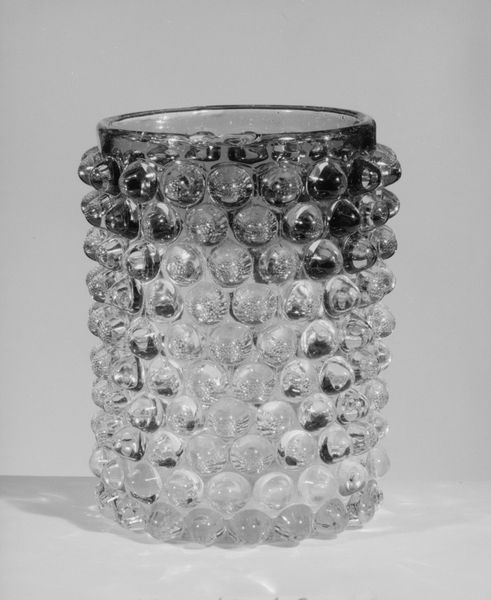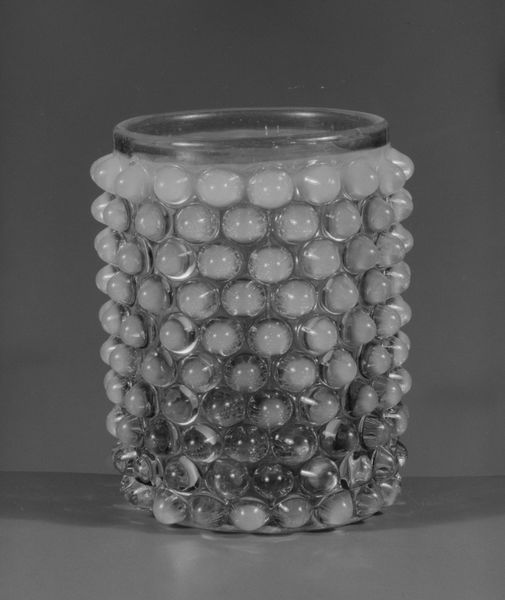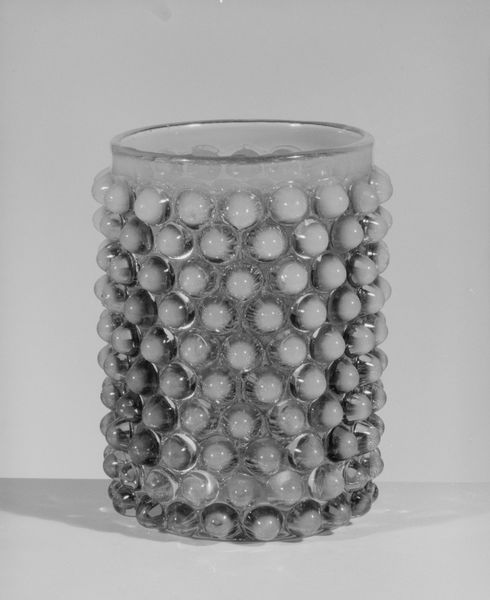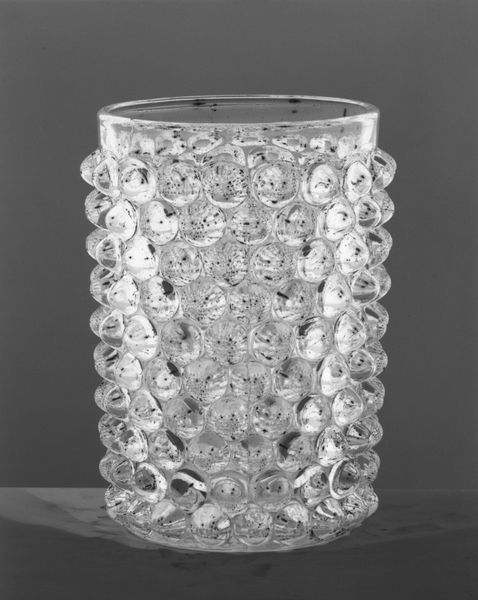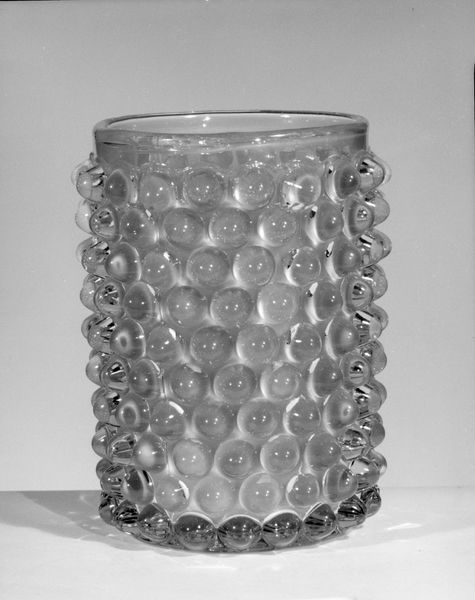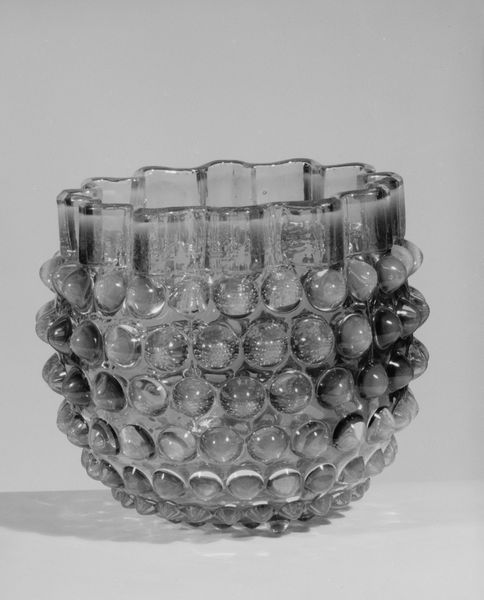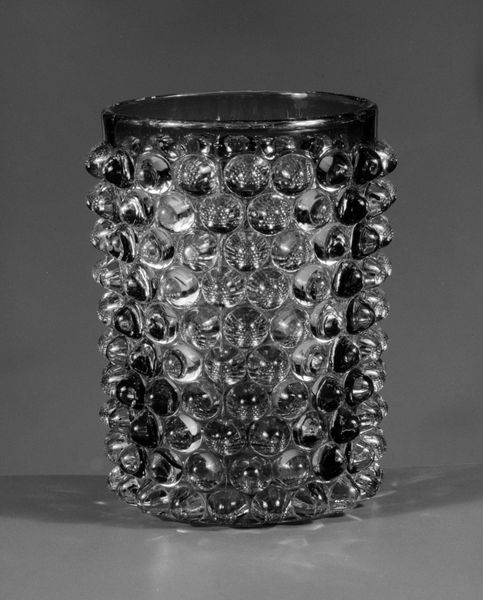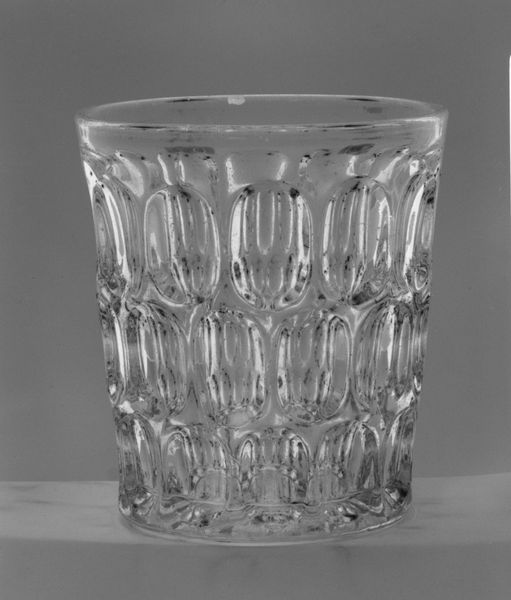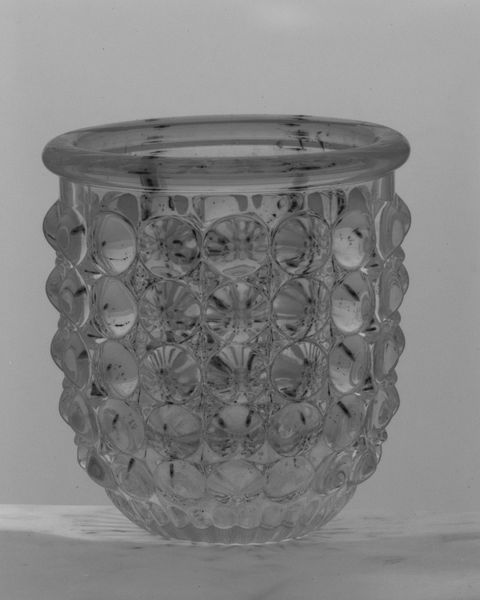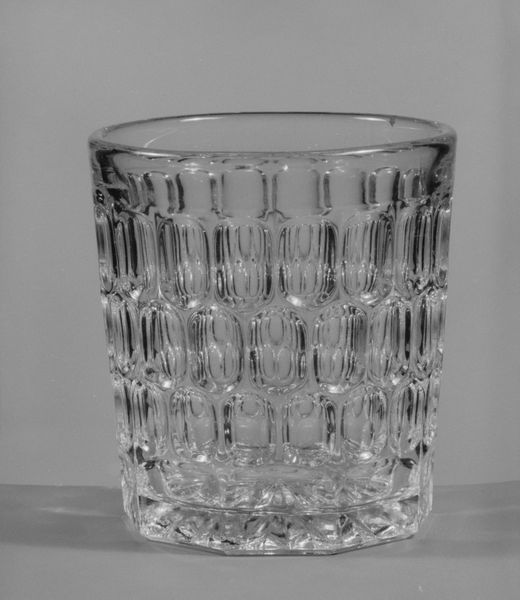
glass
#
art-nouveau
#
glass
#
geometric
#
decorative-art
Dimensions: H. 3 7/8 in. (9.8 cm)
Copyright: Public Domain
Curator: This object is a tumbler, dating from 1887 to 1896, produced by Hobbs, Brockunier and Company. The material is, of course, glass. Editor: Oh, it's delightfully odd. Like bubble wrap, but less annoying, and definitely more elegant. Curator: Indeed. The repeating pattern of spherical protrusions certainly disrupts the otherwise simple cylindrical form. These geometries create a tactile surface. Editor: Totally. I bet it feels amazing in your hands. Makes me think of dewdrops on a spiderweb, capturing and distorting the light, all delicate and kinda magical. Curator: The play of light and shadow is paramount to its aesthetic success. Notice how each sphere acts as a lens, refracting light to give dynamism. This also gives form to a unique type of ornamentation characteristic of art nouveau design. Editor: It’s playful, though, not stuffy. The regularity fights against any kind of high seriousness. Like a party in a glass! Curator: Yet, this ordered sequence could also suggest underlying principles of natural growth, of aggregation and clustering. The materiality, rendered into modular repetition, is very well executed here. Editor: You always bring it back to the theory, don't you? I just think this is pure fun, transforming a functional object into something touchable, pleasurable and full of quirky wonder. It invites a moment of joyful interaction and childlike amazement. Curator: It’s curious to see how the company blends both the functional and ornamental aspects of decorative art here. It truly reflects a fascinating point within glass manufacturing of the era. Editor: For me, looking at this piece is not just looking, it's wanting to feel that coolness and texture against my fingertips. And hey, isn’t that what art is supposed to do? Stir something, anything!
Comments
No comments
Be the first to comment and join the conversation on the ultimate creative platform.

